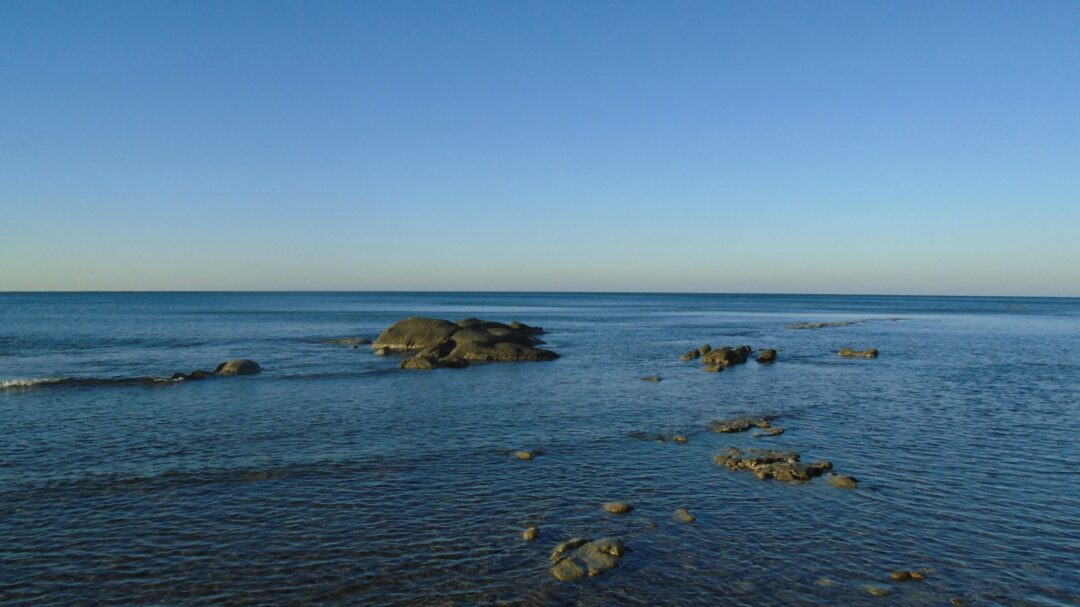Seeing as North Devon is a mecca for surfing in the United Kingdom, in this blog post, we’ll dive into the fascinating history of wetsuits, exploring their inception, key contributors to their success, and design evolution over time.
We also discuss future trends and improvements to designs and materials in the wetsuit industry. As these really have changed the surfing here in North Devon for the better.
| Key Takeaway | Details |
|---|---|
| Wetsuit Creation | The first wetsuit was created in the early 1950s by Hugh Bradner, who used neoprene to design a suit that trapped a small amount of water warmed by body temperature. |
| Wetsuit Evolution | The wetsuit has evolved from single-layer neoprene to nylon-integrated designs, double-lined neoprene, and finally to heated wetsuits. These developments have increased durability, warmth retention, and surfing safety. |
| Notable Wetsuit Brands | Brands like O’Neill and Body Glove were pivotal in the wetsuit’s development, while local brands like Atlantic Coast Wetsuits supply surfers with cutting-edge, eco-friendly designs. |
| Impact on Surfing in North Devon | The evolution of wetsuits has significantly boosted the surfing community in North Devon by extending the surfing season and making the sport more accessible to novices. |
| Future of Wetsuits | Current innovations focus on sustainability, developing wetsuits from natural rubber and recycled materials. Attention is also being paid to improving wetsuit fit, sizing, and maintenance. |
Wetsuits and the Extended Surfing Seasons in North Devon
North Devon owes a considerable part of its success to the evolution of wetsuit design and technology.
As the wetsuit evolved, it opened up the possibility of extended surfing seasons, even in colder weather, thus contributing significantly to the growth of the local surfing community.
In the early 1950s, the introduction of the first wetsuit by Hugh Bradner was a major game changer. The insulating capabilities of the wetsuit allowed surfers in North Devon to extend their sessions, making it possible to surf during colder seasons.

This enhanced the region’s appeal, attracting surfers who were eager to maximize their time on the waves.
The advancements that followed, such as nylon-integrated neoprene wetsuits in the mid-1950s and double-lined neoprene in the 1970s, further revolutionized surfing in North Devon.
With greater durability and improved warmth retention, these innovations allowed surfers to remain in the water for longer periods, increasing safety and making surfing more accessible to novices.
The breakthrough of the heated wetsuit in the 2000s by Rip Curl, equipped with lithium-ion batteries providing adjustable warmth levels, brought about yet another leap in wetsuit technology. Now, surfers in North Devon could brave colder waters with improved comfort, further extending their surfing season.
Local manufacturers and retailers have also been instrumental in keeping North Devon’s surfers equipped with the latest wetsuit technology. Brands like Atlantic Coast Wetsuits, based in North Devon, have consistently supplied local surfers with cutting-edge, eco-friendly designs.
The Father of the Wetsuit (Early 1950s) – Hugh Bradner
Hugh Bradner, an American physicist working at the University of California, Berkeley, is credited with creating the very first wetsuit in the early 1950s.
He was searching for a solution to keep divers warm underwater for extended periods.
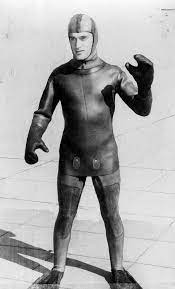
His hypothesis was based on two factors:
- Trapping a small amount of water inside the suit which would then be warmed by body temperature
- Using a unicellular material with air pockets that could also be warmed by body temperature
To test his hypothesis, Bradner experimented with various foam plastics until he discovered neoprene in its earliest form.
He used this material to create prototypes with a thickness ranging from 1.5-6mm and even included zips to minimize water flushing.
The Modern-Day Wetsuit (Mid-1950s)
Two other pioneers in wetsuit manufacturing quickly gained prominence in the market during the mid-1950s: Jack O’Neill and Body Glove.
Jack O’Neill and the O’Neill Brand
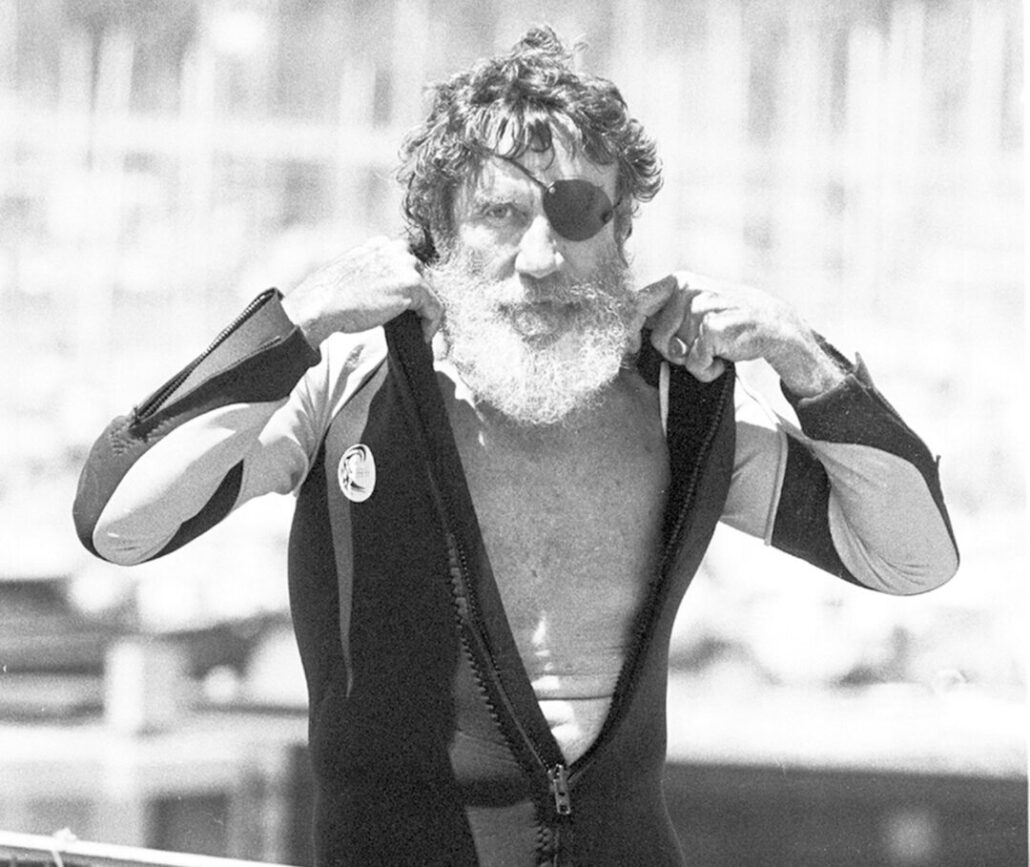
Jack O’Neill founded the O’Neill brand in 1952, initially working as a surfboard shaper before expanding into neoprene vests.
His early designs, such as ‘The Shorty,’ ‘The Long John,’ and the famous ‘Beaver Tail Jacket,’ contributed to his legendary status within the surfing community.
Jack O’Neill was inducted into the Surfer’s Hall of Fame in 2003.
The Meistrell Brothers and Body Glove
Twin brothers Bill and Bob Meistrell launched Body Glove in 1953. The duo, avid divers themselves, sought to create neoprene suits for their community.
Their initial attempts resulted in the creation of the first wetsuit without zips, and their brand is still popular today.
Wetsuit Design Evolution (1950s–2000s)
Single Layer Neoprene (Early 1950s)
The very first wetsuits featured a single layer of fragile neoprene, prone to ripping during use.
Nylon’s Introduction (Mid-1950s)
Nylon was integrated into wetsuits to reduce their fragility, making them easier to wear and remove.
Seam taping was also introduced during this time, helping to minimize water infiltration.
Japan’s Superior Neoprene (1960s)
In the 1960s, Yamamoto Corporation pioneered Geoprene, an eco-friendly limestone-based neoprene alternative that remains popular in high-quality wetsuits.
Double Lined Neoprene (1970s)
Double-lined neoprene became standard in the 1970s; providing better protection against wear and tear while also allowing for more colourful designs.
Blind Stitching (1980s)
Blind stitching improved seam strength and overall warmth retention by reducing water infiltration.
The First Heated Wetsuit (2000s)
Rip Curl introduced the H-Bomb—the first heated wetsuit—using lithium-ion batteries that provided two hours of warmth at adjustable levels.
Comparison Table
| Wetsuit Material | Time Period | Characteristics | Advantages | Disadvantages |
|---|---|---|---|---|
| Single Layer Neoprene | Early 1950s | Fragile, prone to ripping | Inexpensive, easy to manufacture | Not durable or long-lasting |
| Nylon-Integrated Neoprene | Mid-1950s | Nylon was added to neoprene to reduce fragility, and seam taping introduced | Easier to wear and remove, less prone to ripping | Still vulnerable to wear and tear |
| Japan’s Geoprene | 1960s | Eco-friendly limestone-based neoprene alternative | High-quality, environmentally friendly | Expensive |
| Double Lined Neoprene | 1970s | Lithium-ion batteries provide adjustable warmth levels | More durable, better protection | Less flexible |
| Blind Stitching | 1980s | Improved seam strength and warmth retention | Reduced water infiltration, increased warmth retention | More expensive |
| Heated Wetsuit | 2000s | Lithium-ion batteries provide adjustable warmth levels | Customizable warmth, improved comfort in cold water | Expensive, potential safety hazards from batteries |
Future of Wetsuits
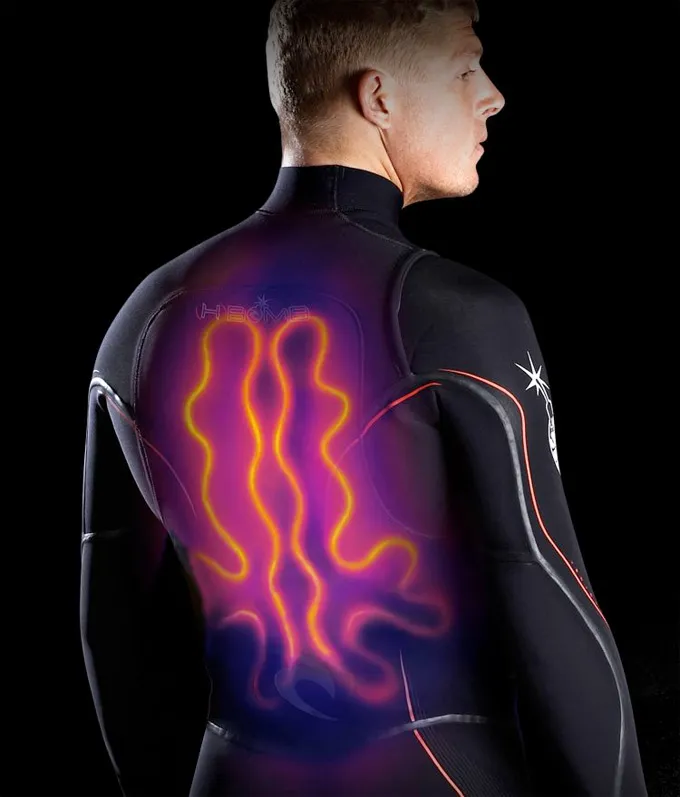
The primary focus of wetsuit innovation now lies in its environmental impact.
Brands like Patagonia, Soöruz, and Vissla are creating sustainable wetsuits from natural rubber, recycled materials, and thermal insulation innovations.
In addition to sustainability, cold water surfing experiences can be enhanced with better wetsuit materials that cater to the specific needs of surfers in frigid conditions.
More attention is also being paid to perfecting wetsuit fit and sizing for every body type.
This includes the development of eco-friendly full suits, spring suits, rashguards, and improved wetsuit accessories such as boots, gloves, and hoods.
Lastly, wetsuit care and maintenance are being revisited to ensure optimal performance and longevity for all surfers in various conditions.
Here are 9 tips to Tips for Prolonging Your Wetsuit’s Life
Summary
As we take a final dip into the wave of progress, it’s clear to see how wetsuits have revolutionized the surfing experience here in North Devon.
From Hugh Bradner’s ingenious neoprene concept, and the consistent and innovative material developments, to the eco-friendly future that awaits us, this voyage has been nothing short of remarkable.
The once-impossible dream of surfing in the colder seasons has not only been realized but taken to new heights.
Wetsuit innovations have effectively extended our surfing season, enhancing the appeal of North Devon as a surfing hotspot.
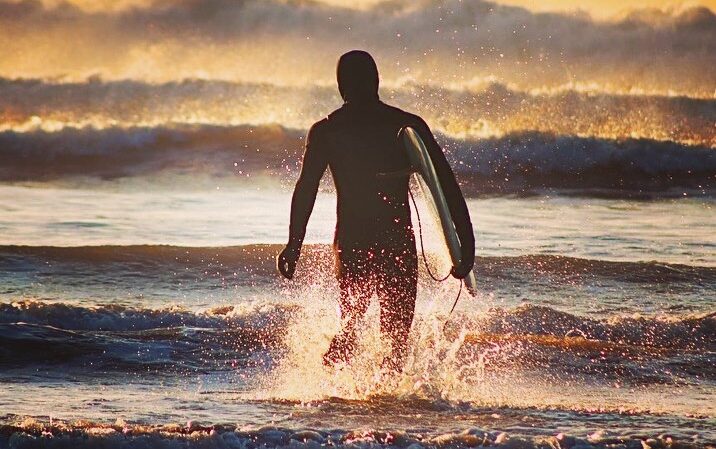
With heated wetsuits and more resilient designs, our local surfers can now embrace the cold waters for longer periods, in increased safety and comfort.
Looking ahead, the surfing experience promises to only get better, YAY!
Want to know more about Surfing in North Devon?
See our Top Surfing Spots in North Devon: A Local’s Guide.
The relentless pursuit for sustainability from brands such as Atlantic Coast Wetsuits – right here in North Devon – fuels anticipation for what’s next.
Beyond durability and functionality, the emphasis on eco-friendly practices underscores a commitment to preserving our cherished North Devon coastline for generations of surfers to come.
As we ride this wave into the future, we recognise that the story of the wetsuit is one of constant evolution and innovation, mirroring the spirit of the surfing community here in North Devon.
So, whether you’re a seasoned surfer or a beginner, there has never been a better time to hit the waves and maximize your Bideford adventure.
Our coastal paradise here eagerly awaits your contribution to this evolving wetsuit story.

Our newsletter is packed with helpful tips and resources to help you mazimise your time in & around Bideford. Sign up now and join our community of savvy Bideford’ers.
About the Author
Welcome to Bideford.com! I’m Jason Jr, a seasoned explorer and avid fan of Bideford and the broader North Devon area. With over a decade of consistent family visits, virtually every weekend, I’ve immersed myself in the rich history and vibrant culture Bideford & North Devon.
On this site, you’ll find a wealth of knowledge amassed from my adventures here. From in-depth local guides to engaging blog posts about Bideford. Whether you’re looking for recommendations on things to do or guidance on where to stay we have you covered. Join me as we delve into the heart of Bideford, North Devon – a town that’s more than just a destination, but an experience waiting to be discovered.
Do you want to see your favourite Bideford attraction, place to stay, event or activity listed here? Contact Us!




